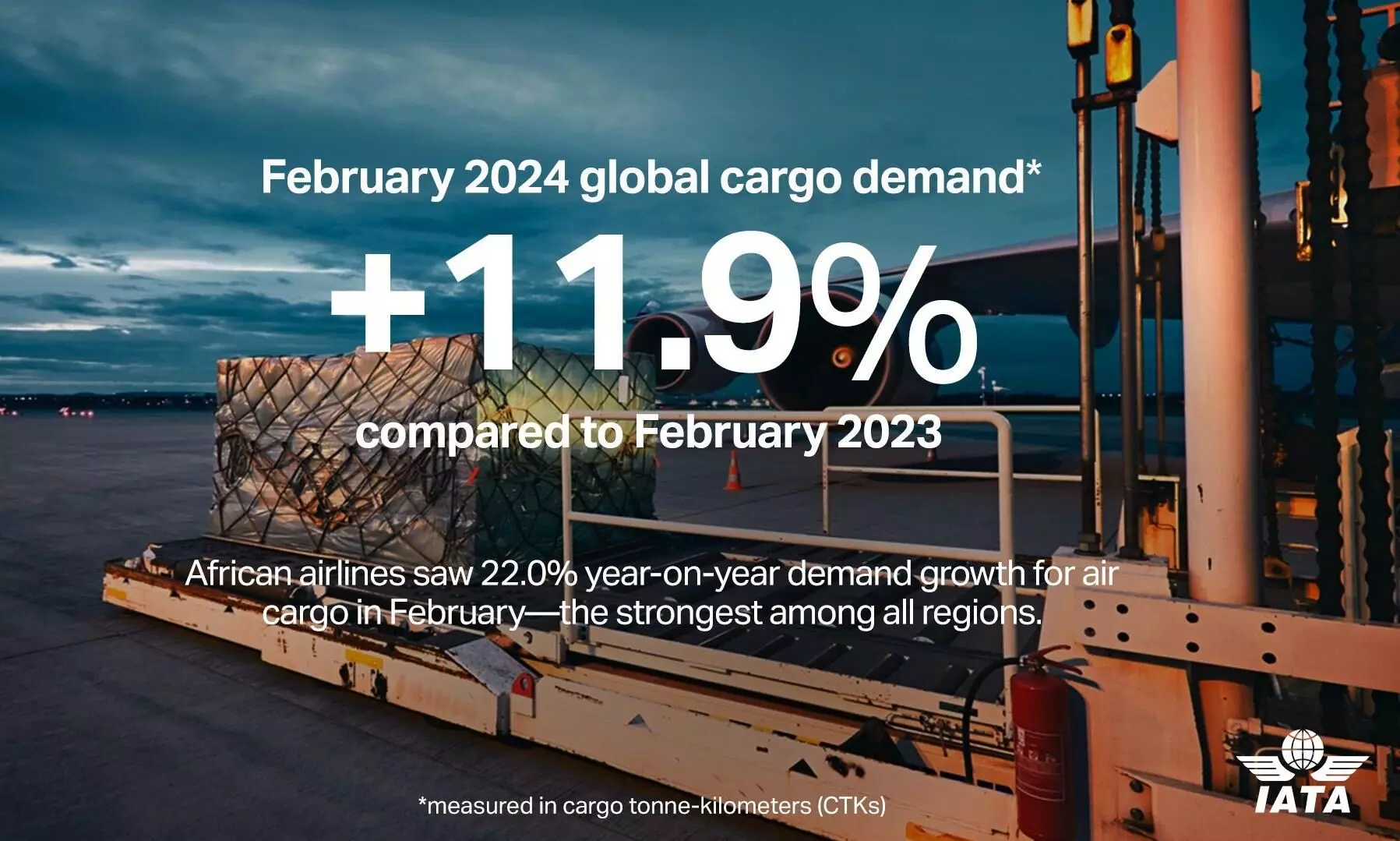
Air cargo demand maintains double-digit growth in February: IATA
This is the third consecutive month of double-digit year-on-year demand growth.

The International Air Transport Association (IATA) released data for February 2024 global air cargo markets showing continuing strong annual growth as total demand, measured in cargo tonne-kilometres (CTKs), rose by 11.9 percent compared to February 2023 levels (12.4 percent for international operations).
This is the third consecutive month of double-digit year-on-year demand growth.
“The growing air cargo demand is a reflection of buoyant international traffic which benefits from booming e-commerce and possibly, though to a lesser extent, a recently increased interest in sea-air services because of the ongoing capacity constraints in maritime shipping, among other factors,” reads the IATA analysis.
Capacity, measured in available cargo tonne-kilometres (ACTKs), increased by 13.4 percent compared to February 2023 (16 percent for international operations). This was largely related to the increase in international belly capacity accompanying growth in passenger markets (29.5 percent year-on-year increase), which far exceeded international capacity on freighters (3.2 percent year-on-year increase).
"February’s demand growth of 11.9 percent far outpaced the 0.9 percent expansion in cross-border trade. This strong start for 2024 could see demand surpass the exceptionally high levels of early 2022. It also shows air cargo’s strong resilience in the face of continuing political and economic uncertainties,” said Willie Walsh, IATA’s director general.
Global cross-border trade increased by 0.9 percent in January. In February, the manufacturing output Purchasing Managers' Index (PMI) climbed to 51.2, indicating expansion. The new export orders PMI also rose to 49.4, remaining slightly below the 50 threshold that would indicate growth.
February year-on-year inflation dropped to 2.8 percent in the EU while rising to 2.8 percent and 3.2 percent in Japan and the US respectively. After four months of deflation, China reported a 0.7 percent increase in inflation year-on-year—a positive development amid concerns over China's economic slowdown.
Asia-Pacific airlines saw 11.9 percent year-on-year demand growth for air cargo in February. This was a significant decrease compared to January’s 24.3 percent year-on-year growth, likely related to slowing activity after the Lunar New Year celebrations. Capacity increased by 23 percent year-on-year as belly capacity came online with a recovery in the passenger business.
North American carriers saw 4.2 percent year-on-year demand growth for air cargo in February—the weakest among all regions. Demand on the North America–Europe trade lane grew by 5.2 percent year-on-year while Asia–North America grew by 3.9 percent year-on-year. February capacity increased by 1.9 percent year-on-year.
European carriers saw 14.6 percent year-on-year demand growth for air cargo in February. Intra-European air cargo rose by 24.5 percent year-on-year—the strongest performance in almost three years. Europe – Middle East routes saw demand grow by 39.3 percent year-on-year, while Europe – North America expanded by 5.2 percent year-on-year. February capacity increased 13.2 percent year-on-year.
Middle Eastern carriers saw 20.9 percent year-on-year demand growth for air cargo in February. The Middle East–Europe market was the strongest performing with +39.3 percent growth, far ahead of Middle East-Asia which grew by 21.9 percent year-on-year. February capacity increased 16.2 percent year-on-year.
Latin American carriers saw 13.7 percent year-on-year demand growth for air cargo in February. Capacity increased 8.9 percent year-on-year.
African airlines saw 22 percent year-on-year demand growth for air cargo in February—the strongest among all regions. The intra-Africa trade lane showed 42.3 percent year-on-year growth. February capacity increased by 28.2% year-on-year.

